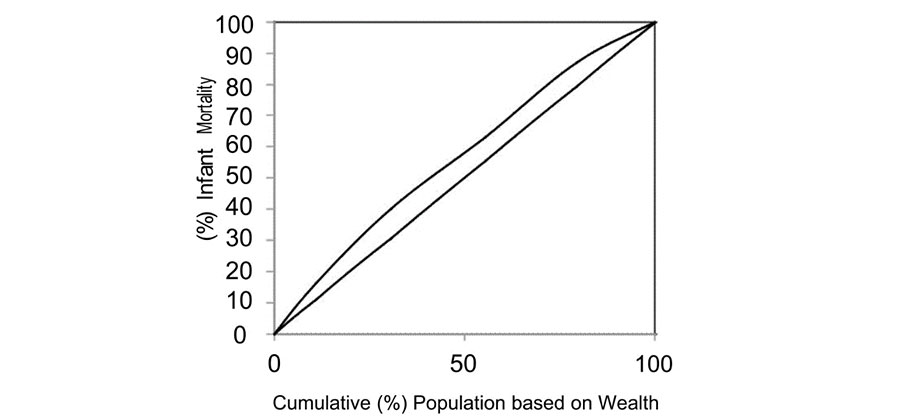


Indian Journal of Science and Technology
Year: 2020, Volume: 13, Issue: 19, Pages: 1917-1926
Original Article
Irfan Hussain Khan1∗, Sofia Anwar2 , Muhammad Sohail Amjad Makhdum2 , Muhammad Rizwan Yaseen2
1 PhD Scholar, Department of Economics, Government College University Faisalabad, Punjab, Pakistan
2 Department of Economics, Government College University Faisalabad, Punjab, Pakistan
∗Corresponding author:
Irfan Hussain Khan PhD Scholar,
Department of Economics, Government College University Faisalabad, Punjab, Pakistan
Email: [email protected]
Received Date:30 March 2020, Accepted Date:28 May 2020, Published Date:18 June 2020
Background/Objectives: Subsistence of health inequalities explains that basic human right is not available to every person in the country. As everyone knows that health of newborn child and maternal health are reflections of any good economy. The Infant Mortality (IM) and Maternal Mortality (MM) are caused by the health inequality, and hence this study is the first attempt to measure health inequality with respect to IM and MM for the most affected country like Pakistan. Methodology: On the basis of different income group across Punjab from the latest Human Development Index reports (HDI), data is extracted from primary household survey through Multi-stage technique for one year from 1 January 2018 to 31 December 2018. Concentration index is utilized to calculate Health inequality. CI has value from -1 to +1. The negative value of CI signifies the fact that the IM is higher in lower quintile of wealth for all regions in Punjab. Findings: The results revealed existence of significant inequalities with respect to IM in Punjab. The Highest inequality with respect to IM and MM is observed in the DG Khan and Chakwal where lowest was observed in Sialkot. However, the high inequality in DG Khan was accompanied by high IM, while Sialkot experiences lowest levels of inequality with low mortality rates. It is concluded that inequality in the wealth creates inequalities in the health status in Punjab. The regional health policies and reforms can also play catalytic role in controlling the mortality rate as well as inequalities in mortalities at macro level in Pakistan.
Keywords: Concentration curve; concentration Index; infant mortality; maternal mortality; health inequality; wealth inequality; Punjab-Pakistan
© 2020 Khan, Anwar, Makhdum, Yaseen. This is an open access article distributed under the terms of the Creative Commons Attribution License, which permits unrestricted use, distribution, and reproduction in any medium, provided the original author and source are credited.
Published By Indian Society for Education and Environment (iSee)
Subscribe now for latest articles and news.